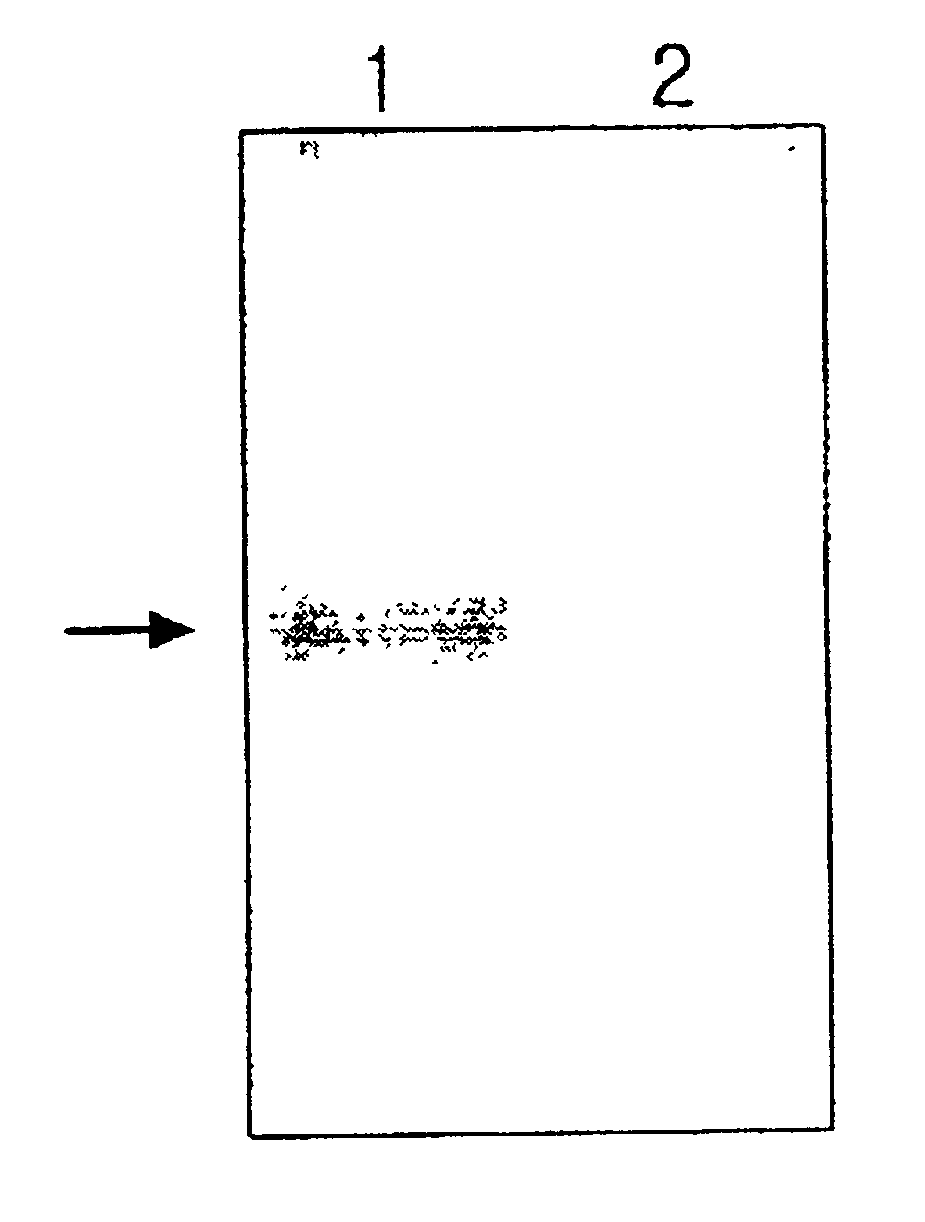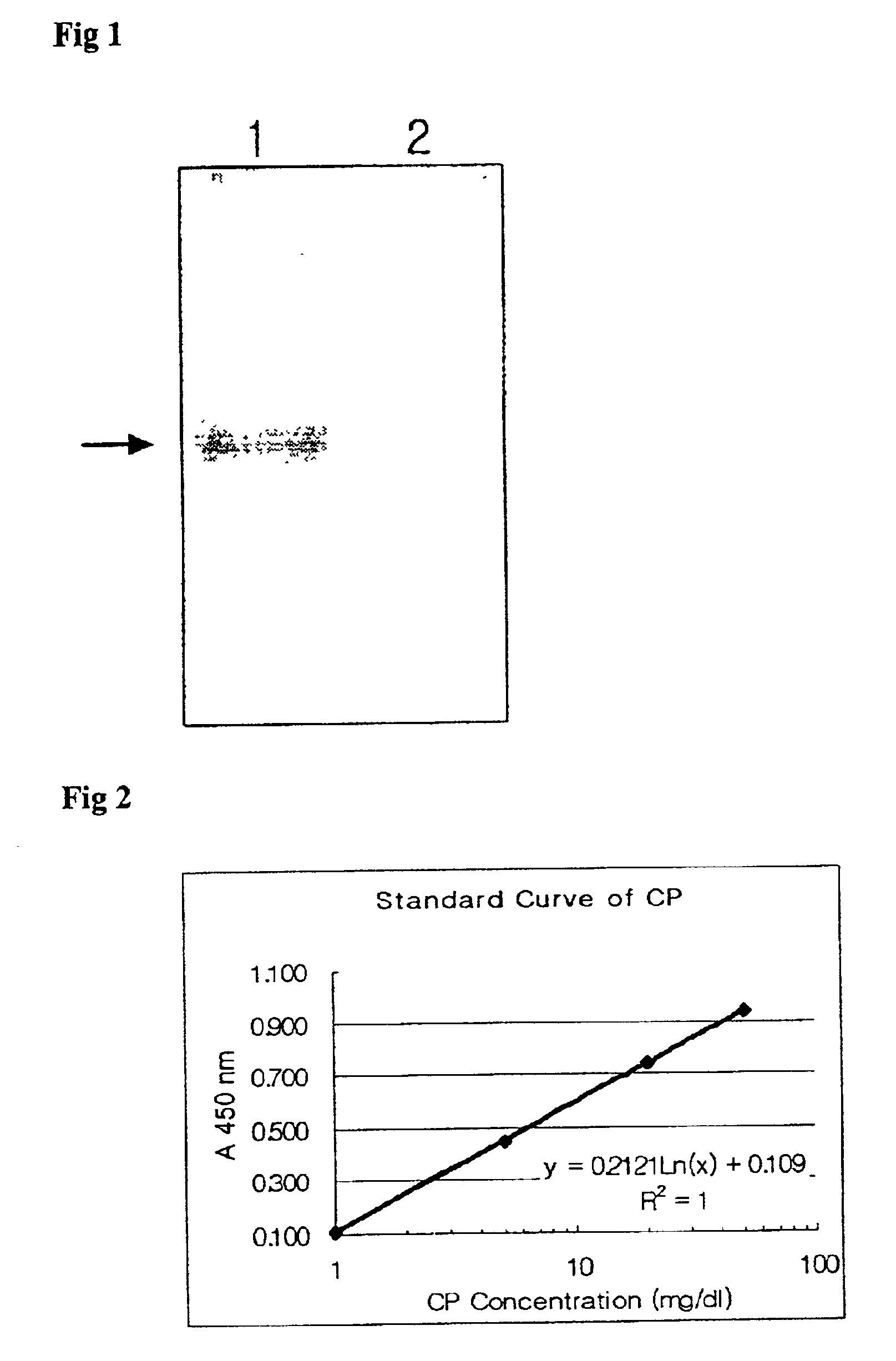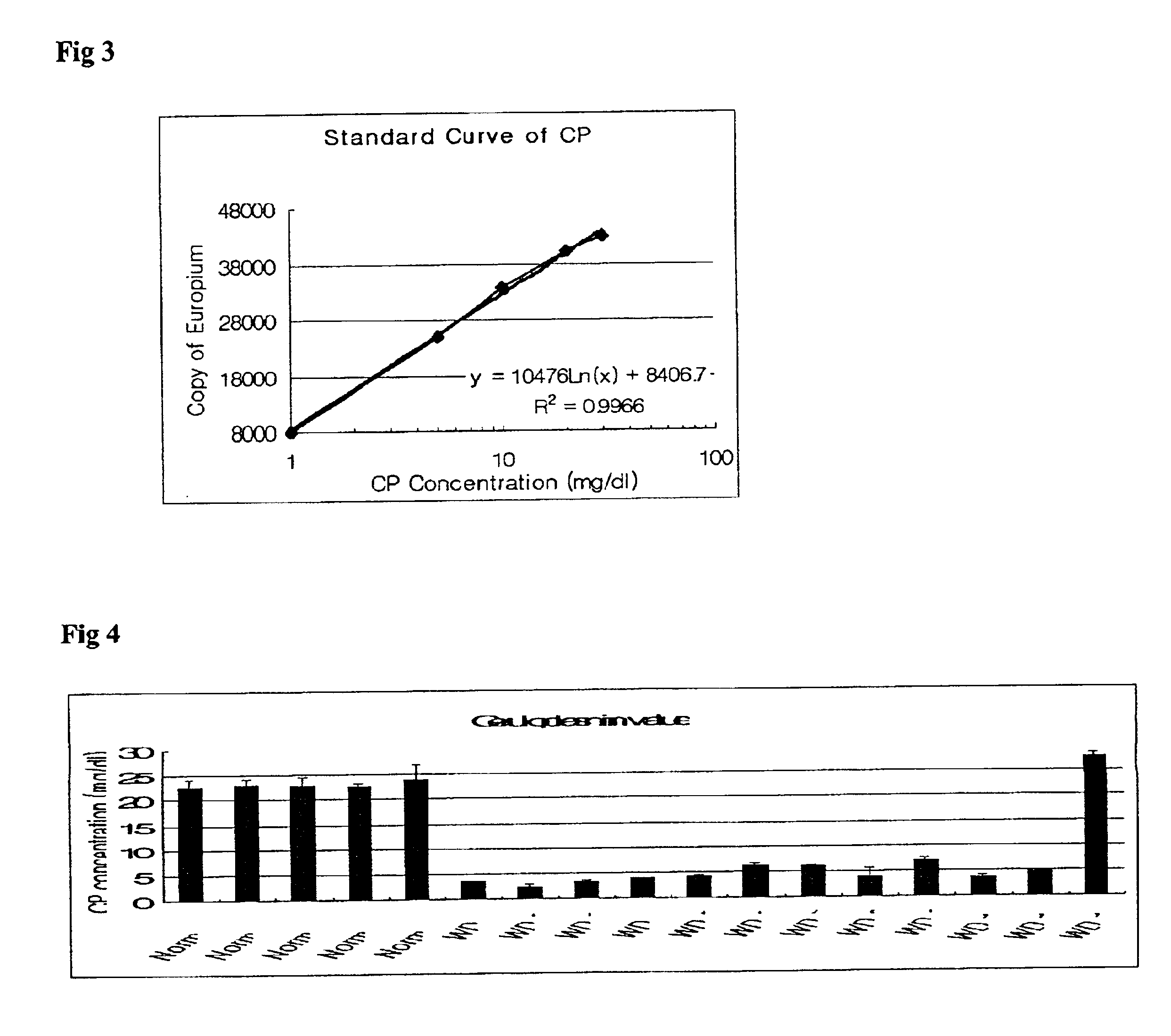Method of measuring ceruloplasmin concentration in a blood spot, kit and method of diagnosing Wilson's disease
a technology of ceruloplasmin and blood spot, which is applied in the field of ceruloplasmin concentration measurement in blood spot, kit and method of diagnosing wilson's disease, can solve the problems of ineffective screening test to trace any sign, ineffective method of measuring ceruloplasmin by measuring oxidase activity of ceruloplasmin,
- Summary
- Abstract
- Description
- Claims
- Application Information
AI Technical Summary
Benefits of technology
Problems solved by technology
Method used
Image
Examples
example 2
Manufacture of Ceruloplasmin-specific Monoclonal Antibody
In order to manufacture the monoclonal antibody of the present invention 100 .mu.l of purified ceruloplasmin having the concentration of 1 mg / ml was emulsified with the same amount of Freund's adjuvant, and the resultant was injected to the abdomen of a BALB / c mouse at an age of 6 to 8 weeks for three times at 14-day intervals. After confirming that ceruloplasmin antibodies were produced after the last injection, 100 .mu.g of ceruloplasmin dissolved in a phosphate-buffered saline was immunized in two weeks. Three days later, spleen cells extracted from the mouse were mixed with Sp2 / 0-Ag 14 myeloma cells at the ratio of 10:1. The mixture was left in polyethyleneglycol 1500 solution for 3 minutes to proceed cell fusion, and centrifuged at 1,200 rpm for 8 minutes to obtain cell precipitates. Then, the precipitates were floated on HAT / RPMI-1640 medium containing 10% fetal calf serum to make 3.5.times.10.sup.6 cells per milliliter,...
example 3
Confirmation of Ceruloplasmin Oxidase Activity Neutralization by Antibody
The mixture of 10 .mu.g of purified ceruloplasmin and the same volume of hybridoma supernatant was reacted together at 37.degree. C. for 30 minutes, and electrophoresed using nonparametric polyacrylamide gel at 4.degree. C. After the electrophoresis, the sodium acetate (pH 5.7) containing 1 mg / ml of p-phenylenediamine dyed over the gel at 37.degree. C. for two hours to confirm the oxidase activity of ceruloplasmin, and was decolorized using 50% ethanol (FIG. 1).
As shown in FIG. 1, the purified ceruloplasmin oxidized p-phenylenediamin by self-oxidase activity and formed a purple band. On the other hand, in the mixed solution of ceruloplasmin with a ceruloplasmin-specific antibody did not form the purple band since the antibody neutralized the oxidase acitivity of ceruloplasmin. Therefore, it is known that the monoclonal antibody manufactured in Example 2 shares its characteristics only with holoceruloplasmin hav...
example 4
Purification of Holoceruloplasmin-specific Monoclonal Antibody
Hybridoma cells producing the holoceruloplasmin-specific monoclonal antibody selected from Example 3 were cultured in T75 flask containing RPMI medium containing 10% fetal bovine serum and cultured in 5% CO.sub.2 incubator at 37.degree. C. for 7 days. Later, the cells were centrifuged to obtain supernatant, and ammonium sulfate was added to the culture fluid, thereby making the final concentration of the solution be 50% for precipitating antibody. Then, the solution was dialyzed in 5L of phosphate-buffered saline (pH 7.0) for overnight and the antibody was purified by DEAE Affi-Gel Blue gel.
PUM
| Property | Measurement | Unit |
|---|---|---|
| pH | aaaaa | aaaaa |
| concentration | aaaaa | aaaaa |
| temperature | aaaaa | aaaaa |
Abstract
Description
Claims
Application Information
 Login to View More
Login to View More - R&D
- Intellectual Property
- Life Sciences
- Materials
- Tech Scout
- Unparalleled Data Quality
- Higher Quality Content
- 60% Fewer Hallucinations
Browse by: Latest US Patents, China's latest patents, Technical Efficacy Thesaurus, Application Domain, Technology Topic, Popular Technical Reports.
© 2025 PatSnap. All rights reserved.Legal|Privacy policy|Modern Slavery Act Transparency Statement|Sitemap|About US| Contact US: help@patsnap.com



